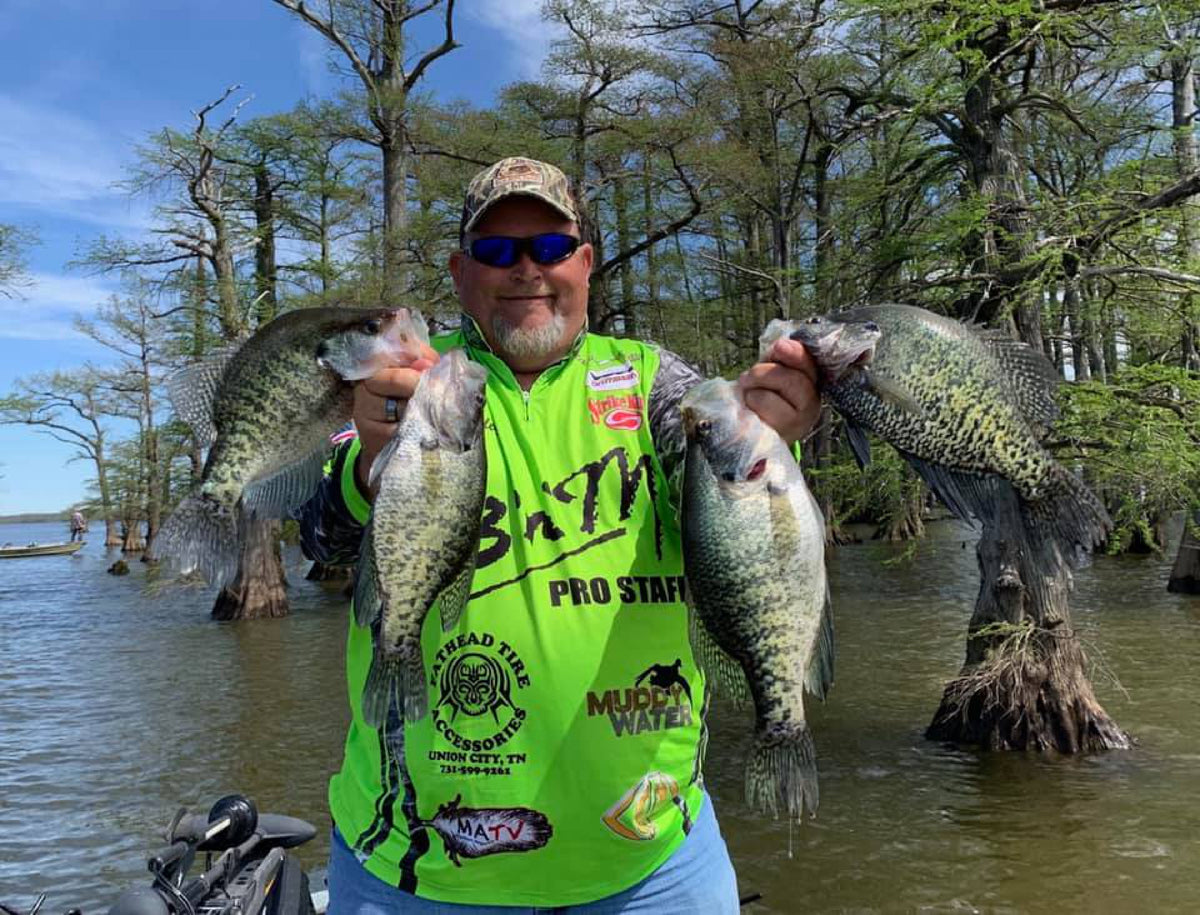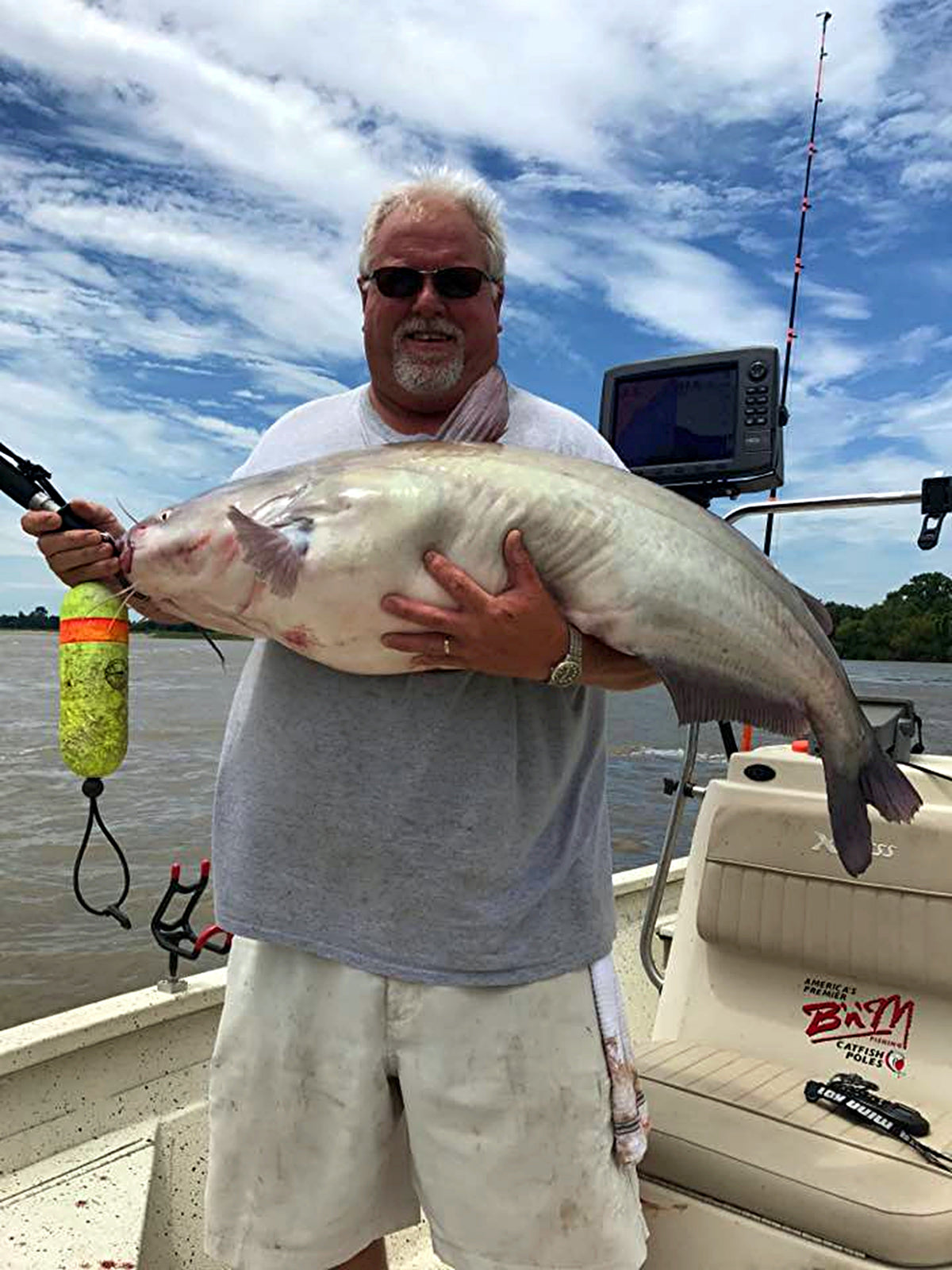When and How to Pull Crankbaits for Crappie (Part 1)
When and How to Pull Crankbaits for Crappie (Part 1)
In this two part series, B’n’M pro staffer Kent Driscoll runs down everything you need to know to successfully catch crappie by trolling crankbaits.
By Phillip Gentry
With the post spawn for crappie coming to an end, crappie in many lakes and reservoirs across the country and moving from their spring locations out to where they will spend the summer. In some lakes this might be on and around deep water brush, in others it might be residence around manmade structure like boat docks and bridges and in others it might be suspended out in the main lake body in relation to the thermocline.
This last pattern is of particular interest to crank baiting anglers because it means those folks can get out their brightly colored crankbaits and troll through schools of crappie without too much fear or snagging something.
B’n’M pro staffer Kent Driscoll said pinpointing how crappie relate to the thermocline is half the battle.
Driscoll credits several summer time factors with making his trolling setup successful. The first is that as the water temperatures heat up, many reservoirs will stratify and a thermocline will set up somewhere in the 12 – 20 foot zone. Not only do crappie suspend out in the main lake just above the thermocline to find comfortable positions, they also find food there.
Being successful at pulling crankbaits requires some dedication to setting up your boat with the right gear and equipment to get the job done.
“Finding the baitfish is important to catching fish” said Driscoll. “Bait can’t live below the thermocline so they end up forming tight schools out in the main lake and at the mouths of major creeks. They suspend around 12 to 15 feet deep out over 20 – 25 feet of water. If I’m marking bait on my graph, that’s where I know I’ll find crappie.”
Trolling crankbaits for crappie requires some commitment on the angler’s part. While you might be able to throw a crankbait out behind the boat and hold the rod in hand until you get a bite, setting your boat up ahead of time with the right rod holders, rods, reels, and line are some of the necessities to insure success.
“Crankbait trolling for crappie is a very technical system” said Driscoll, “but once you’re set up you can really catch a lot of fish and a lot of big fish through the summer times months when most people think it’s too hot to fish. With crankbait trolling, the hotter it gets, the better the fishing gets.”
Stout rods and a good rod holder system are important to pulling crankbaits.
Crankbaiting with B’n’M poles Pro Staff Trolling rods is the way to go. The rods come in a variety of lengths so they can be fished without getting lines crossed and they have plenty of backbone for pulling crankbaits at speeds up to 3 miles per hour plus the added strain of a slab crappie on the end of the line.
Driscoll pulls crankbaits on eight B’n’M Pro Staff trolling rods that he runs along each side of his boat—four to a side. He graduates the rods in length, starting with an 8-foot rod nearest the transom, then moves up to a 10-footer, a 12-footer and finally a 14-foot rod nearest the front.
To hold these rods in place, he has mounted a 4-foot Driftmaster T-5100 trolling bar on either side of his boat at the center of the gunnel. The bar contains 4 rod holders to hold the trolling rods, which are equipped with line counter reels.
Once you’re dialed in, trolling crankbaits will continue to catch fish from now through the end of the fall.
Having the line counters precisely measures the distance each crankbait is trolled behind the boat. The 8 foot rod has the longest line, then the distance out decreases as the rod length increases. This way the crankbaits stay separated. The front rod, the 14-footer, can be rigged as a down rod with a 2-ounce egg sinker that is attached 3 feet in front of the crank. The weight allows the long rod to run more perpendicular and targets fish at whatever depth Driscoll finds on his depth finder.
“I’ve seen a lot of anglers make tremendous efforts to get their boats and rods rigged but the mistake they make is trying to short cut, which in the end winds up costing them fish,” he said. “In the end, it’s the details that can spell the difference between so-so and phenomenal fishing.
Next time, we’ll discuss how to select the right crankbaits in the right colors and how to present them to maximize your crankbaiting efforts. To look at the selection of Pro Staff Trolling Rods, visit our website at bnmpoles.com
Also in Weekly Tips and Techniques

North Texas Fall Crappie Fishing with Brian Carter
Texas crappie pro-staffer Brian Carter loves to pitch jigs at standing timber during the fall of the year.

Summer Crappie Fishing with Billy Blakley
B’n’M pro-staffer Billy Blakley claims the copious amount of rainfall so far this year has created some great summer crappie fishing on Reelfoot Lake.

Search Tactics for Summer Catfish – Part 2
Catfish guide David Magness said his favorite search technique for slack water fishing is to troll drift rigs behind planer boards.



